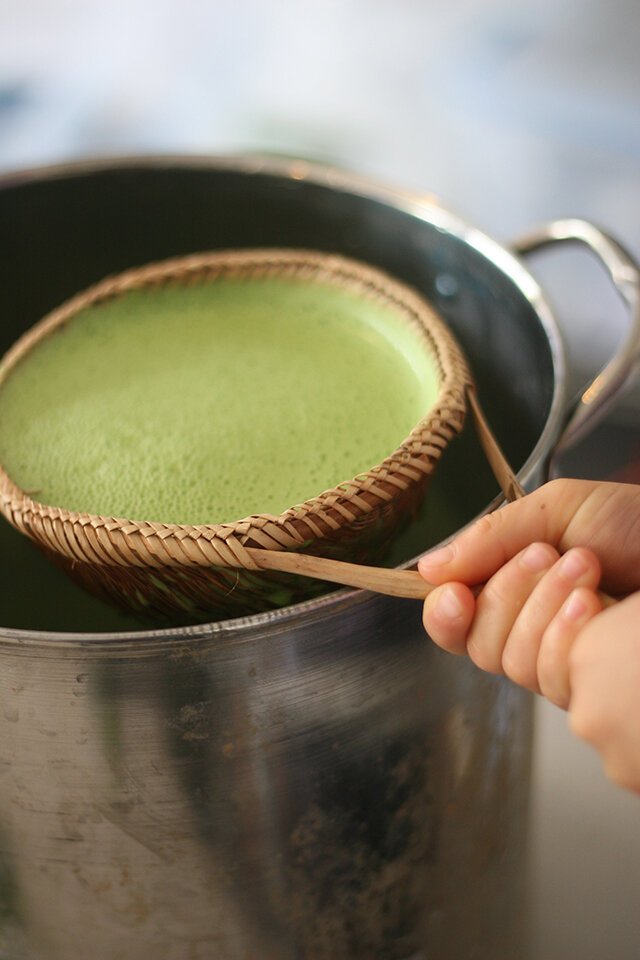Indigo Harvest
Recently my daughter and I joined fiber artist Maribeth of Infinite Blue to help her harvest and experiment with her first indigo crop. Maribeth attended a workshop I hosted last spring with Graham Keegan—a textile designer and natural color advocate based out of LA. Graham brought a bunch of indigo starts that he generously distributed to folks curious about growing indigo. Read his full manifesto about growing indigo here. Maribeth's plants took off, and she ended up with a garden bed full of plants. We so enjoyed the entire process and learned a ton about the various methods of dyeing with fresh indigo leaves.
After harvesting the indigo, we went to work stripping the leaves and soaking them in ice water, this helps to extend their life, as they tend to dry up quickly. With the fresh process, using them right away is critical. Using dry leaves involves a much more complicated process.
There are a few different methods that we wanted to try. One method uses salt to extract the color. I learned about this method from Rebecca Desnos here. The other is a cold process where you blend the leaves with ice-cold water. You then strain and dip your protein fiber (silk or wool) in the liquid directly, let it sit for 5-10 min then rinse and dry. You can also use a hot process with the remaining strained material left over from the cold process. I didn't see this one through, but the basic idea is that you add water, fructose, and soda ash to the strained material and slowly heat for around 30 minutes. In general, it's best to use protein fibers for fresh leaf dyeing. However, I did try using organic cotton that was mordanted in aluminum acetate, and it turned out beautifully with the salt process.
My favorite method was the cold process because it was the simplest. All of the methods provided various shades of bluish green. If you're interested in growing your own leaves you can purchase Indigo Seeds from the shop. You can also try Graham's Indigo and Shibori Kit for an easy introduction to indigo.








